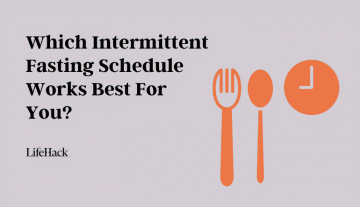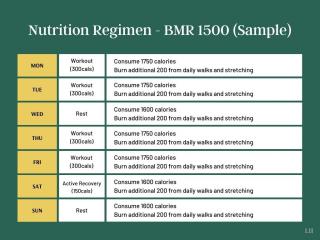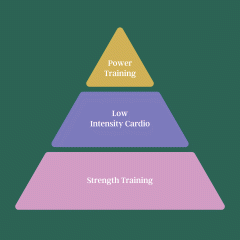Think back to a time when you experienced emotional disappointment or shock – perhaps a loss of a job, an illness or diagnosis for yourself or a family member, an accident, breakup, or life-changing bad news.
Remember the frustration, hurt, sadness, anxiety, fear, or worry you felt.
As you reflect, do you remember a well-meaning friend or family member trying to pep you up with positivity and hope?
Perhaps you were met with, “Everything happens for a reason”, “This too shall pass” or “What doesn’t kill you makes you stronger”. Maybe they said, “It’s going to be okay”, “You’ll get through this” or “Don’t worry, you’ll find someone else”. Or, maybe they tried to make you feel better by sharing, “I know someone who had that same type of [insert diagnosis] and they’re doing great now”, “Never Give up” or my favorite, “It could be worse”.
How did you feel? What was your reaction? Did their positivity and optimism make you feel better? Did it make you feel loved and understood? Or did you feel upset, invalidated, unheard?
That is toxic positivity.
What Is Toxic Positivity?
Toxic Positivity can be defined as:
Here are some examples of toxic positivity:Ignoring, hiding, downplaying, or dismissing your emotions or real feelings. Feeling bad, guilty, or shameful for how you feel. Putting on a “game face” to the world when you feel differently inside. Pretending everything is okay when it’s not. Minimizing others’ emotions. Shaming people for having negative emotions. Invalidating someone’s experience by not acknowledging the real issue/pain/frustration. Minimizing someone’s pain with quotes and perspective.While I’m a big supporter of positive psychology – and we all know the many benefits of positivity and optimism – there are times when these traits are not only unhelpful but can be destructive and harmful.
Positivity is not positive when it denies, invalidates, or minimizes authentic human emotions.
Optimism is not helpful when it makes people feel shame, guilt, or invalidated for feeling a certain way.
Hope is not useful when it does not allow for the natural rise and fall of emotions or when it ignores the gravity of a situation.
Stoicism is not brave or courageous when it forces you to stuff down your real, true emotions and be inauthentic and incongruent with what you really feel.
Perspective is not supportive when it marginalizes your experience.
During this crazy pandemic, people are feeling scared, confused, fearful, overwhelmed, sad, and angry. As a result, many try to put things into perspective by saying, “At least you have a roof over your head, food to eat, loved ones,” or, my favorite, “It could be worse”.
Yes, it could be worse and it still feels really bad to those in the middle of it. People try to bring hope to the situation by reminding us that Shakespeare wrote King Lear and Sir Isaac Newton developed his theory of gravity in quarantine.
Good for them. But did they—like many friends I have talked with—have kids they were trying to homeschool while working full time and a husband who lost his income? I thinketh not.
We often brush people’s problems off by saying, “Yeah, sounds rough. First World Problems!” But those problems, while first-world (and I’m not denying or minimizing there are much worse situations) are still REAL to whoever is experiencing them. Deeming them “First World Problems” only makes people feel worse, guilty, and shameful.
In the book, There’s No Good Card for This: What To Say and Do When Life Is Scary, Awful, and Unfair to People You Love, they share research that states,
“Unbridled positivity in an experience of failure or distress makes people feel worse, not better.”
I’m Guilty
I’ll admit it. I grew up in a positive, supportive, encouraging family. My parents were always imparting words of wisdom and perspective in every situation. They are positive, upbeat, entrepreneurs who move forward quickly when things get them down.
Whether by nature or nurture, or both, I grew up to be a positive and optimistic person myself. I see the bright side of everything.
Ask anyone who knows me, and they’ll tell you I have a wealth of stories, metaphors, and yes, quotes in my back pocket for any situation that may have you down. That is not to say I haven’t had my fair share of hardships, grief, and loss. I have. But I always try to see the upside.
I’ve learned over the course of my life and career that while some people love the hope and optimism I bring to most situations, there is a time and place for positivity and more importantly, a time and place for compassion, acknowledgment, and validation.
Alternatives to Toxic Positivity
Acknowledging and Validating Other’s Feelings and Emotions Goes a Long Way
Often, all someone wants and needs is the acknowledgment and validation of their feelings. We all want to feel heard and seen. We don’t want someone to tell us how to feel or not feel or how it “isn’t that bad.”
But First, You Must Acknowledge Your Own
When you don’t face your own emotions, they will always rise back up.
What the mind conceals the body reveals.
When you try to hide, push down, or ignore your emotions and feelings, they don’t just go away. They go deep within you. They eat at you. They cause ulcers, back pain, sickness. That “sudden” heart attack, “unexplained” high blood pressure, or “confounding” anxiety may not be so inexplicable after all.
Believe me; I learned this the hard way.
You need to acknowledge and feel your emotions. It’s okay to not be okay—to be angry, tired, scared, or frustrated. When you feel your emotions, it provides release and prevents those feelings from eating away underneath the surface. In fact, there are many benefits to experiencing negative emotions.
In a study on emotional acceptance, Iris Mauss, associate professor of psychology at UC Berkeley, found that “people who habitually accept their negative emotions experience fewer negative emotions, which adds up to better psychological health.”
That doesn’t mean you need to wallow in your negative emotions. Once you acknowledge and accept, they can surface and pass.
Body Worker Dr. Ruth Ziemba once told me, “Feel your feelings but don’t let them become you.” This has stuck with me for years. Instead of “I am sad,” I can acknowledge “I am feeling sad.” I don’t have to get stuck in that state.

Empathy and Compassion Are Almost Always the Right Response
Empathy is the ability to understand and share the feelings of another, or the ability to put yourself in their shoes. A simple, “That sounds really hard,” or “I’m sorry you’re going through that” goes a lot further than unchecked optimism.
The same goes for compassion. Compassion—from the roots passion (suffering) and com (with)—means to suffer with another. Compassion is an innate part of human response to suffering, which is comprised of a three-part experience of noticing another’s pain, feeling with another, and responding in some way.
The key here is to notice their pain, feel with them, and respond in a way that works for their needs and situation.
Vulnerability Builds Rapport
I remember doing a leadership workshop early in my career. We came to a session where the participants were providing feedback to each other about their leadership style. It was my turn to receive feedback, and I’ll never forget what happened. I remember every detail like it was yesterday.
Lauren, a thoughtful, confident, blonde, pretty, and likable leadership coach faced me and said, “I feel like I can’t connect with you as everything is always so positive.”
I looked around as the rest of the room nodded and voiced their agreement. I was shocked. And then I was angry. Instead of taking it in, I went on the defensive. Turns out I had missed her point completely.
It wasn’t that I had to bare my soul or walk around sad, frustrated, or angry all the time; they just wanted to see all of me, and they felt they hadn’t. That made me less relatable and connected. I brushed this off and moved on. That must be their issue. But it wasn’t.
I received this feedback many times over the course of my career. My positivity and optimism (while real and genuine and mostly helpful) made me unrelatable at times. People liked being around me because of these traits, but it could leave them feeling like they were never fully connected.
Later in my career, a mentor of mine shared that “vulnerability builds rapport.” It’s true. It does.
When people see all of you, they get to know you. They feel closer, more connected, and accepted. I learned that I needed to be more open with my struggles and challenges.
In addition, when others face things that were stressful, upsetting, or downright painful, I needed to be more sensitive, thoughtful, and not hand out my suggestions for how to fix it, words of wisdom, or positive quotes, at least not right away.
Timing Is Everything
I want to be clear. This is not to say you can’t be positive, share your experiences, hope, and optimism with others. That optimism and hope might be just what someone needs. Just remember, there is a time and place for everything.
When your best friend just told you that her boyfriend left her unexpectedly, telling her, “You’ll find someone better” or “I never liked him anyway” is not going to be helpful. Instead, ask her how she is, sit and talk with her, bring her some ice cream.
Allow her to feel her emotions. Then, as the wounds start to heal, let her know how great she is, that you know she will find someone, and then offer inspiration, optimism, and positivity.
People will often look back at a situation and be able to see the upsides, learn the lesson, and realize everything did happen for a reason but . . .
It’s difficult to see the rainbow when you’re in the middle of a storm.
Reach for the Next Best Emotion
In many spiritual fields, people refer to an emotional frequency scale, ranging from shame at the bottom to enlightenment at the top. Many spiritual teachers speak about reaching for the “next best emotion.”
If you are feeling fear, it’s very difficult to leap from that frequency all the way to joy because someone provides perspective or positivity. Instead, you can work your way up the ladder. If you can move from fear to courage, you can move to acceptance and ultimately to love, joy, and peace.
So, when you’re supporting someone (or yourself), don’t expect to go from depressed to happy in one fell swoop. It’s helpful to take baby steps up the emotional ladder, and as long as you are making progress, you’re on the right track.

Just Listen
Often, we force optimism because we don’t know what to say to a given situation. Someone we love is hurting, and we want them to feel better.
Often, we are uncomfortable in the negative emotions (yep, that’s me) so you want to fix it. You want to do something—anything to make them feel better. Remember, that listening IS something. Listen to understand what’s going on. Hold space for them to openly share without the fear of judgment, criticism, or shame.
When you take the time to listen, you can truly understand how someone feels about a situation. And when you truly understand how they feel, you will be better prepared to respond when the time and place are right.
Follow Their Lead
When someone shares something that is going on for them, follow their lead. If they lead with their frustration and disappointment, allow them to go down that path. If they start down the path of optimism and hope, jump on that train with them.
A few years ago, I was at a party when a friend who I hadn’t seen in a while told me she was getting divorced. My response of, “I’m so sorry” was met with, “No, it’s the best thing that’s happened to me! I’m so relieved and so happy to be moving forward with my life. We’re both in a really good place.”
Find out where they are and ride their wavelength, not your own.
Just Be There
Often, we respond with unhelpful positivity or optimism because we don’t know what else TO DO.
Hope is real, and so is pain. When someone is hurting, they often don’t need or want anything from you. They just want to know you’re there for them—when they’re happy or when they’re not, in the good and the bad.
Be kind. Be compassionate. Validate their feelings. Let them know you’re there for them.
Real Vibes Only
It’s time to replace your “Positive Vibes Only” or “Good Vibes Only” sign with “Real Vibes Only”.
In the end, it’s not about being positive or negative, optimistic, pessimistic, or anything in between. It’s about being real and authentic.
I will always be a silver lining, see the good in everything type of person. That’s just who I am. I am proud of being optimistic and positive. I do believe everything happens for a reason and that it will all be good in the end. If it’s not good, it’s not the end.
However, I have learned that there is a time and place for everything. Including acknowledgment, validation, and compassion so we can all heal and move forward. Because toxic positivity is not really all that positive after all.

Tips on Avoiding Toxicity
Featured photo credit: yns plt via unsplash.com





























































